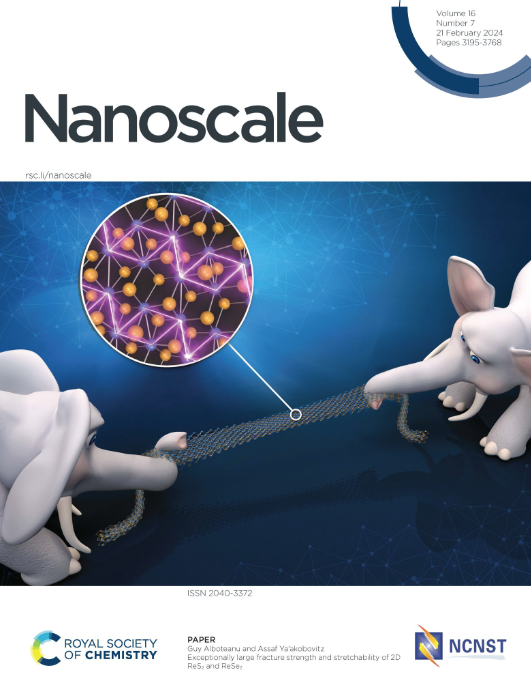通过双向改性增强AFRP的介电性能:纤维表面的氟化SiO2蜂窝状结构和树脂基体中掺杂Al2O3纳米颗粒
IF 5.8
3区 材料科学
Q1 CHEMISTRY, MULTIDISCIPLINARY
引用次数: 0
摘要
高性能绝缘棒作为气体绝缘开关设备和超高压输电系统的核心部件,其可靠性对系统的稳定至关重要。芳纶纤维增强环氧树脂复合材料(AFRP)以其轻量化和高强度的特点成为高性能绝缘棒的理想材料。然而,由于芳纶纤维(AF)表面能和化学惰性较低而导致的界面弱化效应仍然是限制其工程应用的关键技术瓶颈。本研究通过1H,1H,2H,2H-全氟十二烷基三甲氧基硅烷(FDTS)与SiO2纳米颗粒的协同作用,在AF表面构建了蜂窝状的表面结构。通过在环氧基体中加入纳米Al2O3, AFRP的界面结合强度和绝缘性能得到了协同提高。界面抗剪强度和抗拉强度分别提高了123.02%和129.13%,击穿场强提高了64.45%。微纳结构表征分析表明,界面增强源于AF表面改性和Al2O3掺杂的共同作用,通过FDTS、SiO2和Al2O3引入的非键合相互作用优化了界面绝缘性能。本文章由计算机程序翻译,如有差异,请以英文原文为准。
Enhanced Dielectric Performance of AFRP via Bidirectional Modification: Fluorinated SiO2 Honeycomb-like Architecture on Fiber Surfaces and Al2O3 Nanoparticle Doping in Resin Matrix
As the core component of gas-insulated switchgear (GIS) and ultra-high voltage transmission systems, the reliability of high-performance insulating rods is crucial for system stability. Aramid fiber-reinforced epoxy resin composites (AFRP) have become an ideal material for high-performance insulating rods due to their lightweight properties and high strength. However, the interfacial weakening effect in AFRP, caused by the low surface energy and chemical inertness of aramid fibers (AF), remains a critical technical bottleneck limiting its engineering applications. This study constructs a honeycomb-like surface structure on AF through the synergistic interaction of 1H,1H,2H,2H-perfluorodecyltrimethoxysilane (FDTS) and SiO2 nanoparticles. By incorporating Al2O3 nanoparticles into the epoxy matrix, the interfacial bonding strength and insulation properties of AFRP are synergistically enhanced. The interfacial shear strength and tensile strength of AFRP increased by 123.02% and 129.13%, respectively, while the breakdown field strength improved by 64.45%. Analysis of micro-nano structural characterization reveals that the interfacial enhancement originates from the combined effects of AF surface modification and Al2O3 doping, which optimize interfacial insulation properties through non-bonding interactions introduced by FDTS, SiO2, and Al2O3.
求助全文
通过发布文献求助,成功后即可免费获取论文全文。
去求助
来源期刊

Nanoscale
CHEMISTRY, MULTIDISCIPLINARY-NANOSCIENCE & NANOTECHNOLOGY
CiteScore
12.10
自引率
3.00%
发文量
1628
审稿时长
1.6 months
期刊介绍:
Nanoscale is a high-impact international journal, publishing high-quality research across nanoscience and nanotechnology. Nanoscale publishes a full mix of research articles on experimental and theoretical work, including reviews, communications, and full papers.Highly interdisciplinary, this journal appeals to scientists, researchers and professionals interested in nanoscience and nanotechnology, quantum materials and quantum technology, including the areas of physics, chemistry, biology, medicine, materials, energy/environment, information technology, detection science, healthcare and drug discovery, and electronics.
 求助内容:
求助内容: 应助结果提醒方式:
应助结果提醒方式:


